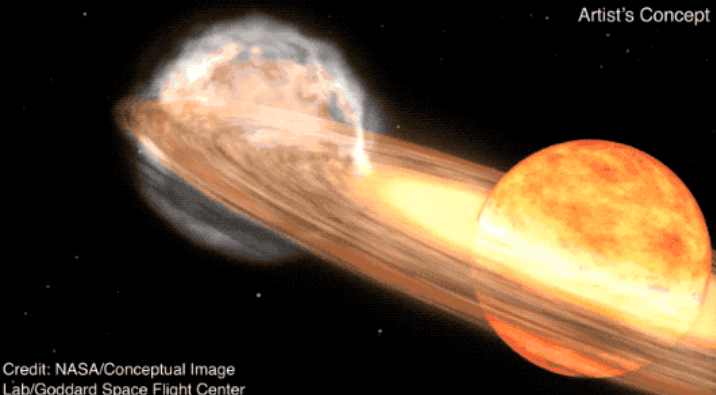A RARE nova is expected to light up the night sky this year, according to astronomers.
The nova will erupt in the binary star system T Coronae Borealis (T CrB) and be visible to the naked eye.
T CrB is located in the northern constellation Corona Borealis, or the Northern Crown, around 3,000 light-years from Earth.
The star system consists of a red giant star and a white dwarf that orbit each other.
The red giant continuously feeds the white dwarf with its stellar fuel, hydrogen.
When enough hydrogen accumulates on the white dwarf, it undergoes a thermonuclear explosion.
This causes the star to brighten dramatically and is what scientists call a nova.
Every 80 years or so, this system puts on a dazzling nova display, with the last eruption occurring in 1946.
Now astronomers predict another outburst is imminent sometime between February and September 2024, Nasa explained in a statement.
“This could be a once-in-a-lifetime viewing opportunity,” Nasa officials said.
Most read in Science
They added that the star system normally features a magnitude of +10, which is too dim to see with the unaided eye.
During the event, this will increase to magnitude +2, which is a similar brightness to the North Star, Polaris.
“Once its brightness peaks, it should be visible to the unaided eye for several days and just over a week with binoculars before it dims again, possibly for another 80 years,” Nasa officials said.
OTHER STARGAZING EVENTS IN 2024
For stargazers and amateur astronomers, 2024 promises to be a year of cosmic fireworks.
On April 8, 2024, a total solar eclipse will be visible from North America.
The solar phenomenon will pass over Mexico, the United States, and Canada.
A total solar eclipse occurs when the Moon passes between the Sun and Earth, completely blocking the face of the sun.
The Eta Aquariid meteor shower is also expected to brighten the night sky on May 6.
It’s one of only two meteor showers caused by dust and debris left in the inner solar system by Halley’s comet, per Live Science.
This post first appeared on Thesun.co.uk










